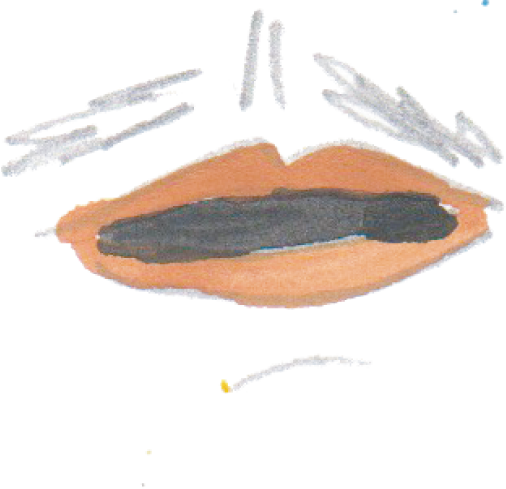My voice: Ning de Coninck-Smith
Why did you take part in the initiative Sexism in Danish Higher Education and Research…
In the aftermath of the initiative during fall 2020 the group behind it decided to not only point to the problem in academia, but to gather our shared academic knowledge in this field. This has now become a book that you can download for free – a resource for exploring and understanding sexism and, not least, a selection of relevant tools if you are eager to respond to and transform sexist culture – to act.
Here you will find an excerpt from the book: how to understand sexism as a continuum: different categories of sexism and stories to illustrate them. These stories have been re-written from the many testimonies we had received in the hope that they can function as narrative sketches. These sketches introduce fictional characters yet they represent the real-life examples. Please have a look at the excerpt and the examples below and read more in the book.
Why did you take part in the initiative Sexism in Danish Higher Education and Research…

Given the complexity of sexism, we introduce a continuum model to demonstrate how sexism operates in multifaceted ways. Everyday sexism and subtle sexist behaviors are at one end of the continuum and hostile sexism and sexual harassment is located at the other end. In the red end of the continuum, we are dealing with assault or explicit discrimination whereas in the other end we are dealing with everyday and subtle sexism which operates in more invisible ways. This form of sexism might make you go “Is it just me? Am I crazy?”
(You are not).
Our continuum model demonstrate how one form of sexism cannot readily be distinguished from another, rather, each element in the continuum shades into the other elements. Thus, the different forms of sexism at one end of the continuum make way for more hostile forms of sexism. As several researchers demonstrate, sexual harassment is actually rooted in everyday sexism (Buchanan, Settles, Hall & O’Connor, 2014). This doesn’t mean that, for example, telling a sexist joke is directly linked to sexual harassment, rather, it means that sexist jokes foster a culture where sexual harassment and other forms of harassment more easily can be performed. It means that a single joke itself does not do major damage, however, each individual sexist joke, sexist comment or act adds up over time, creating a sexist work environment which reproduces gender inequality. Therefore, a critical focus should be on the connections among the various forms of sexism rather than seeing one form of sexism as a distinct set of discrimination.
Everyday sexism is often viewed as somewhat harmless remarks and jokes that are just part of organizational reality. However, these acts are often humiliating and contribute to a social climate where employees are demeaned, their self-regard lowered, and their activities and choices restricted in the workplace. Everyday sexism is performed in many different forms.
Example: Juliana is asked to arrange a conference. She wishes to share the responsibility of doing so, however, a colleague replies, “But you are the best”. Although she feels acknowledged by that compliment, she also knows that doing this type of work means not having time to do research, therefore, she feels unsure whether this is a genuine compliment. Another colleague says, “Yes we need those good feminine qualities.” Juliana now feels that rather than paying her a compliment, ‘feminine qualities’ are being used as an excuse for her to arrange the conference. This everyday sexist remark is highlighting ‘feminine qualities’ as important and needed to perform administrative task, thus, reflecting a gender stereotypical view of what women are ‘good at’.

Subtle sexism is oftentimes difficult to recognize and deal with, particularly in the workplace. The subtleness is, for example, assuming women are sensitive and emotional. When subtle sexism is performed it is normal to feel put down, but unable to really name it for what it is.
Example: Louise is having lunch with her colleague Martin and a professor who is their supervisor. At one point the professor looks at his sock and sees a hole in it. He looks at Louise and says: “Now I know what I have you for” and points toward the hole in the sock. Martin and the professor laughs. Louise feels awkward and humiliated. She wonders, “Why would the professor point to her? Why not Martin?” Louise starts feeling self-conscious and insecure, yet she remains silent because this was just a joke. This joke is subtle sexism because the joke actually reflects degradation of her intellect. The subtleness implies that when sexist language is presented as humor or in jest, it is to be viewed as acceptable. The denigration of Louise through humor, trivializes the unpleasant reality of discrimination behind a smokescreen of harmless banter.

Benevolent sexism is (often paternalistic, but not necessarily) communicating a more positive attitude toward for instance women that appears favorable but is actually sexist because it portrays women as incompetent or weak individuals. Despite the positive feelings benevolent sexism may indicate for the perceiver, its underpinnings lie in traditional gender stereotyping and the harm this causes.
Example: Nina is a research assistant on a contract that will soon end, and she is experiencing that feeling of fear in regard to her future career. Will she be able to get a PhD position? She decides to talk to the Head of Department who says, “You would probably fit better in a secretary position. I am unsure whether a PhD will be too much for you”. This remark is benevolent sexism because the Head is communicating a ‘protective’ attitude to Nina by saying that perhaps a PhD will be ‘too much’ for her. This might be a well-intended remark because the Head actually wishes that Nina pursuits another career option, however, the remark is also patronizing her and it rests upon the same gender stereotypical view of women as the above i.e., women are good at administrative tasks, so Nina would be better in a secretary position.

Hostile sexism is an aggressive type of prejudice, and its expressions are, arguably, easy to identify (Glick & Fiske, 1996). Hostile sexism refers to negative views toward individuals who violate traditional gender roles. According to ASI (The Ambivalent Sexism Inventory) there exists many hostile sexist myths in our workplaces, for example, that hiring policies favor women over men under the guise of asking for “equality”. These hostile sexist myths also appeared in the stories from our petition.
Example: Riley was recently hired as an assistant professor. At a team-meeting a male professor said, “Have you seen who they hired in Department X? I think it is so sad to see that the University is now beginning to hire women only because they are women”. Another colleague stated,” It’s those damn quotas! Soon every Department will be filled with women, and we all know what that means!” Riley was really uncomfortable, but she gathered herself and asked, “What does that mean?” They all laughed. A colleague looked towards her, and said: “How do you feel about only getting hired because you are a woman?”

Sexual harassment is first and foremost considered illegal. The overt forms of sexual harassment include, for example, unwanted kissing, touching of breasts or genitals, all forms of sexual assault, requests for sexual favors, making sexually explicit comments, uninvited massages, sexually suggestive gestures, catcalls etc.
Example: Martin is at the annual Christmas Party having a great time dancing with a few fellow colleagues all in a good mood and cheerful. At this point, the fact that he identifies as a gay man is well-known among all of his colleagues. Yet, a few moments later a female colleague comes up to him dancing rather closely. At first, Martin thinks Oh well, this is probably only one of those ‘He is a gay man, and I can be a little more extrovert around him’-kind of attitude. Martin keeps on dancing with her to the extent that he feels comfortable. But then she grabs first his ass and then his crotch, smiling as if to tantalize him, and she says, “I might just turn you straight this evening.”
